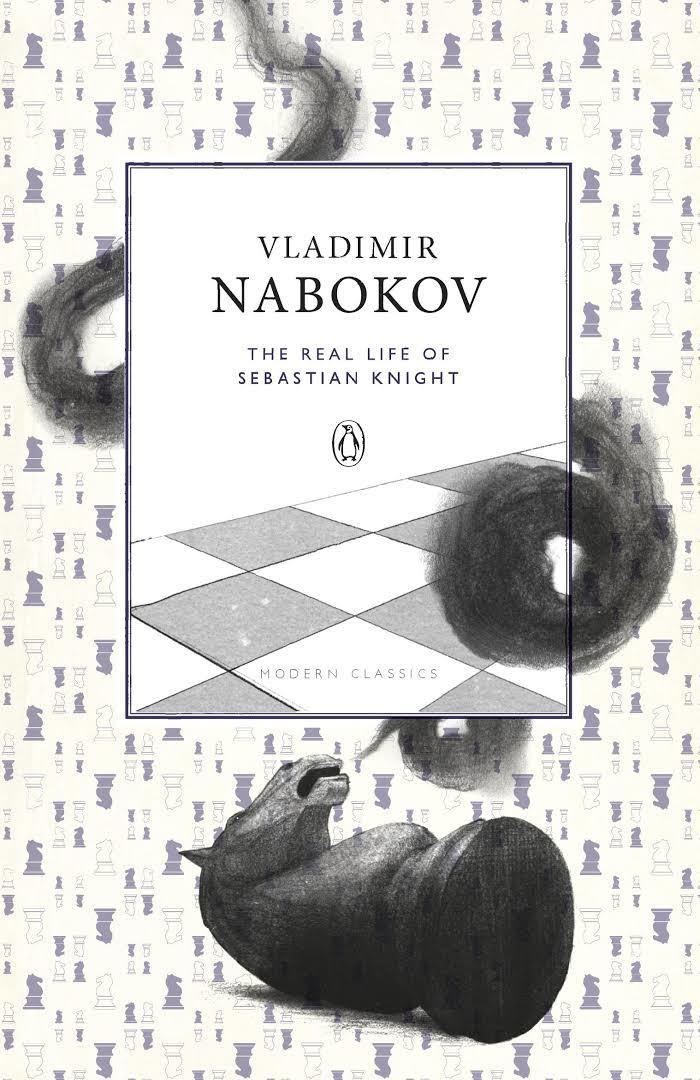7.8 /10 1 Votes7.8
Originally published 1941 Genre Fiction | 3.9/5 Goodreads | |||||||||||||||||||||||||||||||||
 | ||||||||||||||||||||||||||||||||||
Similar Vladimir Nabokov books, Fiction books | ||||||||||||||||||||||||||||||||||
The Real Life of Sebastian Knight is the first English language novel by Vladimir Nabokov, written from late 1938 to early 1939, and published in 1941 by New Directions Publishers.
Contents
Composition
Nabokov's first major work in English was composed in Paris while the author sat in the bathroom, his valise set across a bidet as a writing desk.
Plot summary
The narrator, V., is absorbed in the composition of his first literary work, a biography of his half-brother the famous Russian-born English novelist, Sebastian Knight (1899–1936). In the course of his quest he tracks down Sebastian's acquaintances from Cambridge, and interviews friends and acquaintances, including friends Helen Pratt and P.G. Sheldon, and the painter Roy Carswell.
In the course of his biography V. also reviews Sebastian's books (see below) and attempts to refute the views of the "misleading" biography by Knight's former secretary Mr. Goodman, The Tragedy of Sebastian Knight. Goodman maintains that Knight was too aloof and cut off from real life.
V. concludes that, after a long-running romantic relationship with Clare Bishop, Sebastian's final years were addled by a love affair with another woman—a Russian whom he presumably met at a hotel in Blauberg, where Sebastian spent time recuperating from heart ailments in June 1929. V. leaves for Blauberg, where, with the help of a private detective, he acquires a list of the names of four women who were staying at the hotel during the same time period as Sebastian: Mademoiselle Lidya Bohemsky, of Paris; Madame de Rechnoy, also of Paris; Helene Grinstein, of Berlin; and Helene von Graun, who, despite her German name, spoke Russian and also lived in Paris.
V. is intent on tracking down each of the women to interview them. After dismissing the possibility of Helene Grinstein, his search leads him to Paris, and the list narrows to two candidates: Mme de Rechnoy and Mme von Graun. V. first suspects Mme de Rechnoy of being the mystery woman based on a compelling description from her ex-husband, Pahl Palich Rechnoy. Mme de Rechnoy has left her husband and cannot be located, leaving V. unsatisfied.
However, after meeting Mme von Graun's friend, Mme Nina Lecerf, and hearing stories of von Graun's unflattering affair with a Russian, V. becomes convinced that Helene von Graun is the woman in question. Nina invites V. to visit her in the country, where Helene will be staying with the her. V. accepts, and, worried that he will miss his prey, writes a brief letter to Helene announcing his intention to meet her there.
At the country house V. finds that Helene von Graun has not yet arrived. He mentions his letter to Nina, which angers her. By a ruse, V. learns that it is Nina Lecerf herself, and not Helene von Graun, who was Sebastian's final romance. Nina was, in fact, the Mme de Rechnoy who V. had originally suspected, but never met.
The final chapters of the narration deal with The Doubtful Asphodel, Sebastian's final novel, which is centered on a dying man and his slow decay. V.'s description of then novel reveals similarities and coincidence not only with Sebastian's life, but with V.'s own investigative adventures. V. tries to account for Sebastian's final years, including a last, cryptic letter from Sebastian asking V. to visit him at a hospital outside Paris. As V. makes the trip to Paris (from Marseilles where he is temporarily stationed by his firm), his ties to his own life become increasingly visible for their tenuousness: his employer hampers his ability to travel, he struggles to remember necessary details such as the hospital name, he even lacks sufficient money to travel efficiently. V. finally arrives at the hospital and listens to his sleeping brother's breathing from a separate room, only to discover that the sleeping man is not his brother, but an English man. Sebastian Knight had died the night before.
The novel concludes with a philosophical reconciliation of Sebastian's life, and a final implication that V. himself is Sebastian Knight, or at least an incarnation of his soul.
Books by Sebastian Knight
The narrator discusses the following (fictitious) works by Knight:
Quotes
Critical response
Nabokov's friend, correspondent, and sometime antagonist Edmund Wilson called Sebastian Knight his favorite among the author's works. A new reading by Gerard de Vries "The True Life of Sebastian Knight," presenting Colonel Samain in the role usually attributed to Nina Rechnoy, is published by Zembla, the official site of the International Vladimir Nabokov Society.
